Saddle Fit / Saddle Length – How Long is Too Long? Tip 7
Saddle length is an issue I have been noticing more and more in the past few years, as breeding seems to have really concentrated on making somewhat more ‘compact’ (i.e., ‘shorter’) horses.
So – other than the obvious visual “short-backedness” of a horse, ask yourself…
Does your horse have a “4-beat” canter?
Does your horse have tense back muscles which impair movement?
If you answered “yes” to either of the above questions, you may be faced with a saddle length issue. The first is more of a visually obvious result; the second more of a ‘feeling’.
Many of us are familiar with the term “short-backed” to describe a horse, but few of us are aware that even a horse with a back that appears to be of normal length may actually have a very short saddle support area. The length of the saddle support area (the area where the saddle must sit) is what saddle makers and saddle fitters are concerned with, since this will determine how long the panels of this particular horse’s saddle must be.
Breeds that commonly have a short saddle-support area are Friesians; Baroque type horses such as Andalusians, Lusitanos, PREs, and Lippizaners; Arabians; and more and more frequently, “modern-type” Warmbloods. One common saddle fitting issue faced by these breeds is that the panels on dressage saddles often are too long for their backs. In order that these horses may develop to their fullest potential, and work willingly, happily and without pain, it is crucial that they have a saddle with panels that are the correct length for their backs, without impinging on the ovaries or the kidneys.
In order to identify your horse’s saddle-support area – the area where the saddle must sit – do the following:
- With a piece of chalk, outline the edge of your horse’s shoulder blade (photos: left & middle).
- Locate your horse’s last floating rib (photo: right). To do this, find where his hairlines come together in the area of his flank and draw a line straight up to his spine.

The following pictures will help demonstrate some of the important aspects of saddle length:
- A skeletal diagram showing the proper saddle support area with respect to a horse’s rib cage.
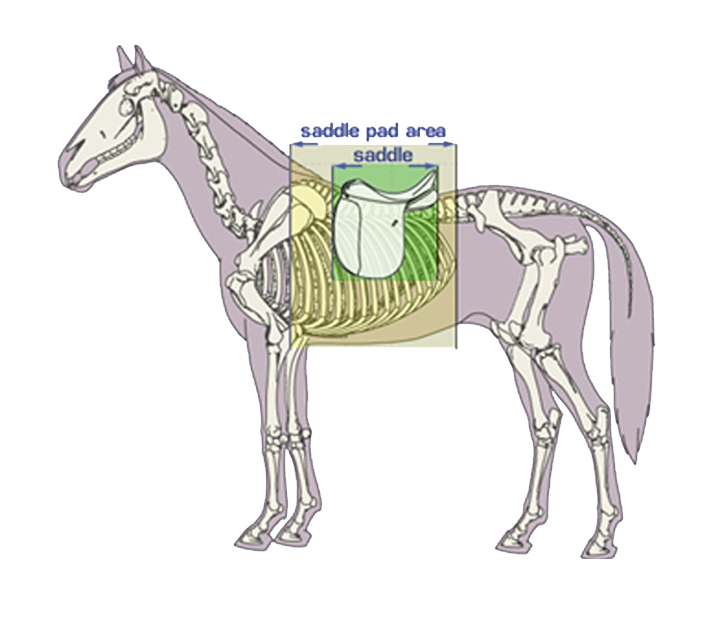
- I am pointing to the last supporting rib on a horse with a saddle that fits properly within the boundaries of the saddle support area for this particular horse.
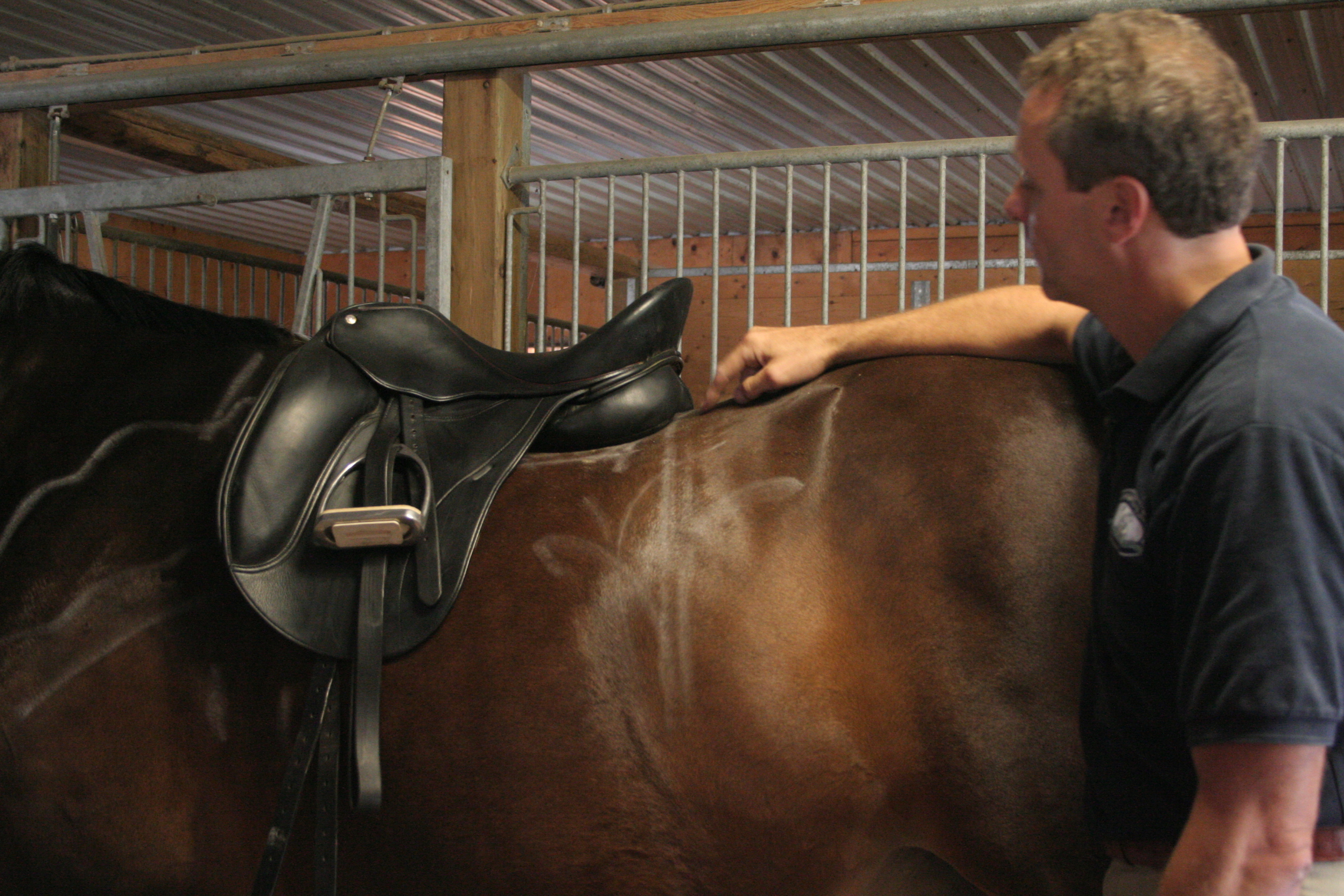
- The red lines represent the changing directional pattern of hair on the horse’s body relative to the last supportive vertebra (notice the panel of this well fitted saddle does not extend past this point).
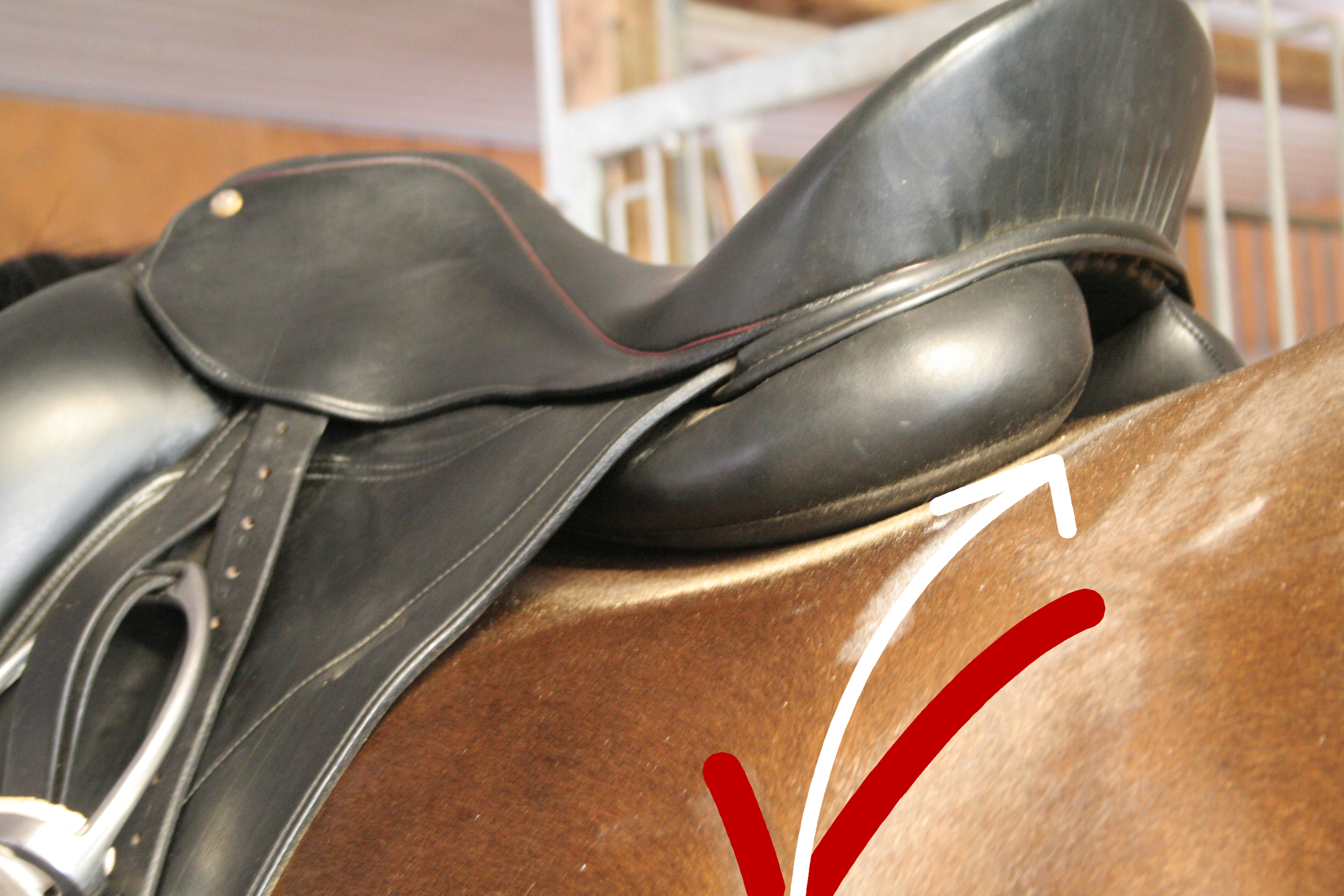
- The first chalk line represents the front of the scapula (shoulder blade) whereas the second chalk line again represents the last supportive vertebra.
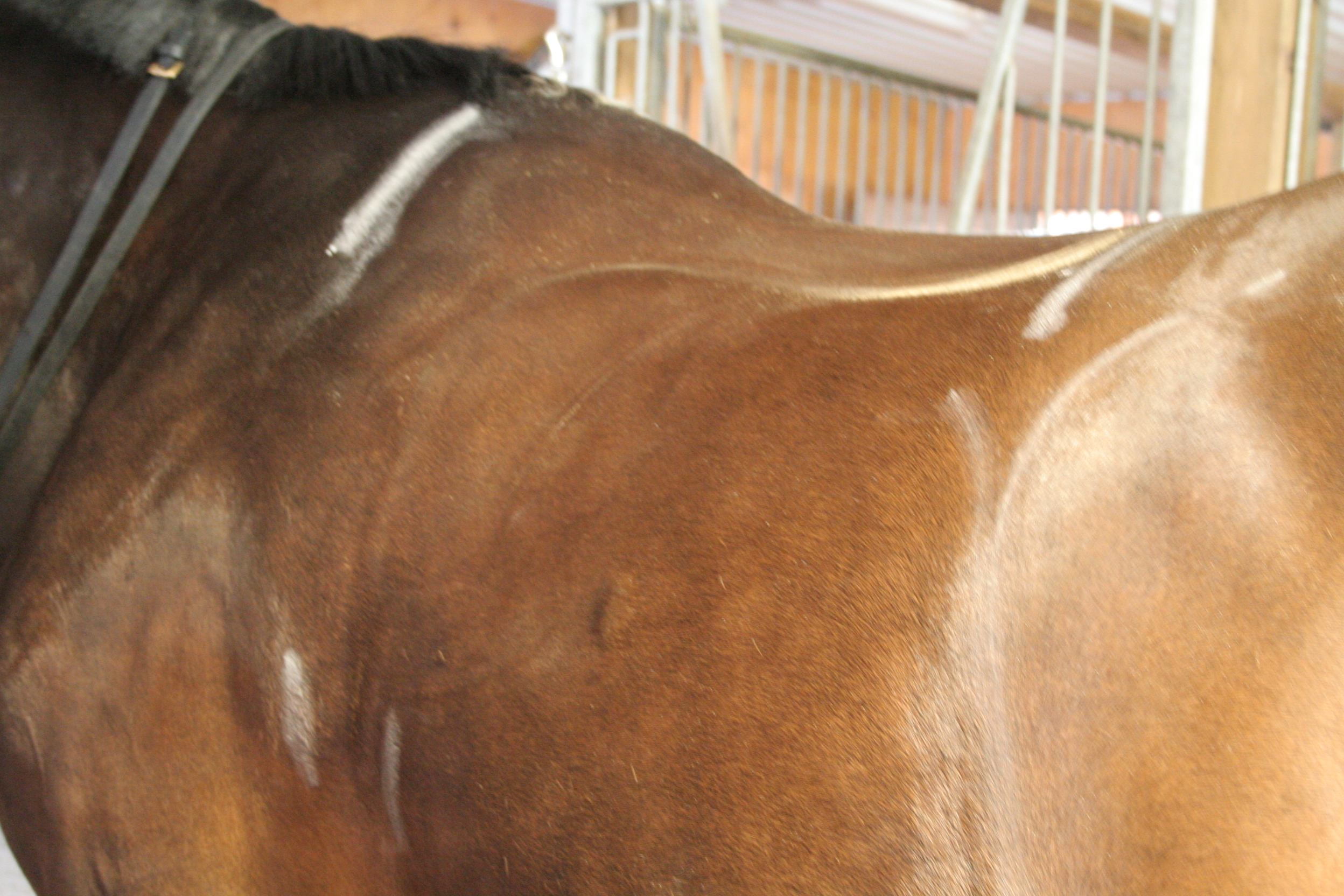
- My left hand is pointing to just behind the shoulder blade where the saddle ideally should be placed and not extend past the last vertebra outlined.
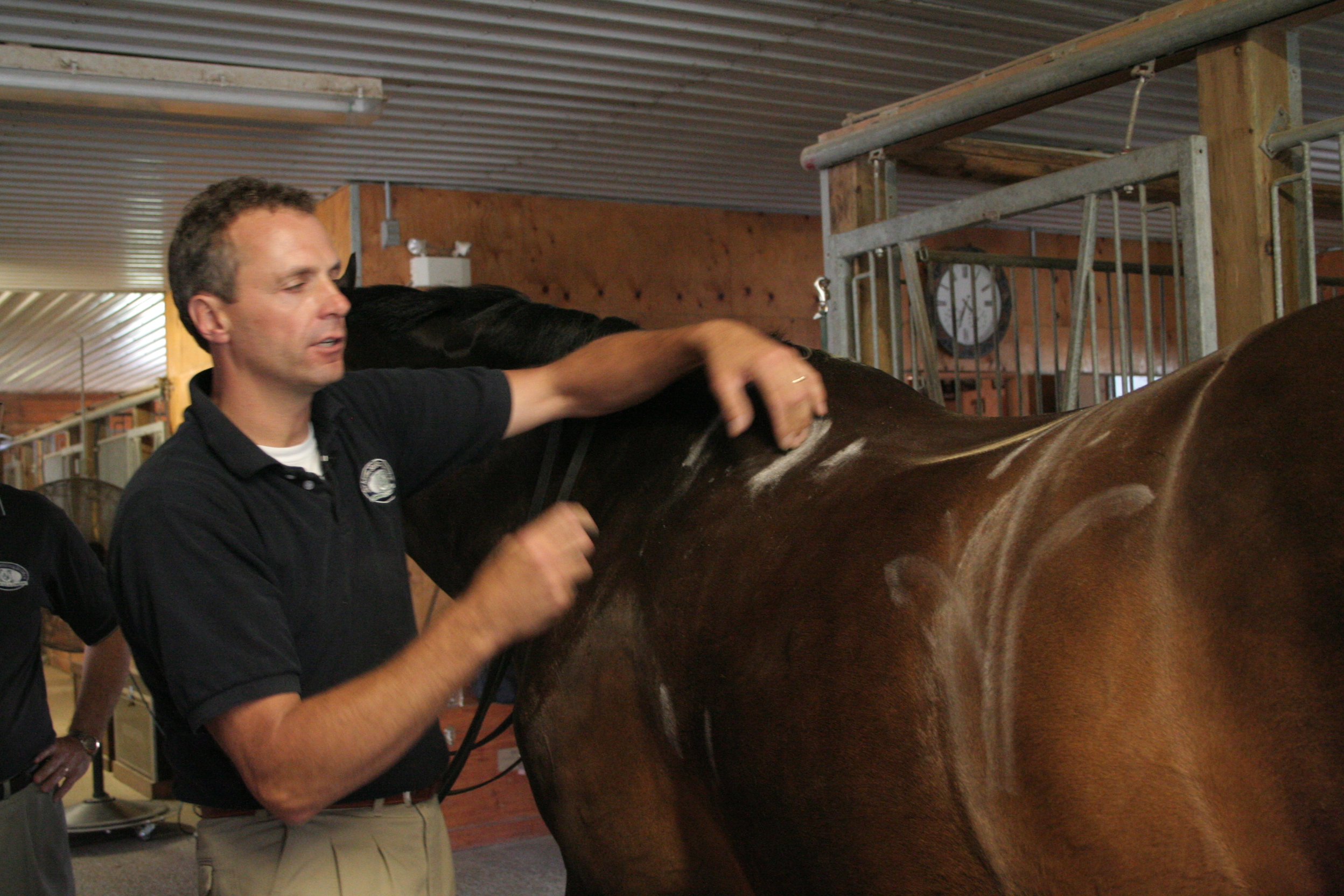
- I am drawing ‘pain lines’ from pinched nerves that appear on some horses when they have an ill fitting saddle.

First, the saddle must sit behind the shoulder. But, and particularly at the canter, a saddle that is too long often will get driven forward into the shoulder. As I previously wrote in my blog concerning billet alignment, this can produce a buildup of scar tissue on the scapula, and over time, the scapula may actually be chipped away by the tree points of the saddle.
Second, the saddle cannot extend past the last floating rib. If a saddle is too long for a particular horse, the rear of the panels will extend past the horse’s saddle support area. This is extremely uncomfortable for the horse, as it puts pressure on his lumbar region. A horse ridden in a saddle that is too long will often tighten his lower back muscles; in some cases, you can actually see the horse hollow and drop his back in an attempt to get away from the pressure of the saddle. He may even buck in extreme cases, in an effort to get the weight off his lumbar area. Finally, he may have difficulty moving forward into the canter, or may simply be persistently “off” for no readily apparent reason.
If these are issues you have been facing, and have been unable to actually attribute them to anything ‘real’ (like illness of some sort for example) then perhaps you might consider that it could simply be that the saddle is too long for your horse’s back and is making him extremely uncomfortable – which is why this ‘acting out’ occurs. Think about how you would feel if you had something constantly pounding into your kidneys. It is possible for some manufacturers (including Schleese!J) to make a saddle with for example, an 18.0” seat for the rider who needs a little more room, with a 17.5” panel to accommodate the horse’s back.
Sometimes you have to look past the obvious symptoms to find the cause….
©2016 Saddlefit 4 Life® All Rights Reserved
